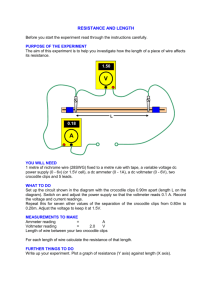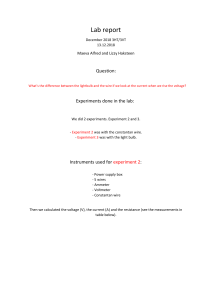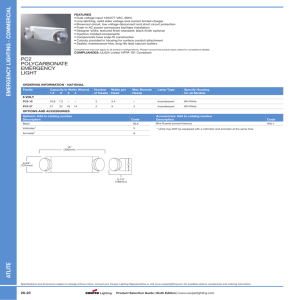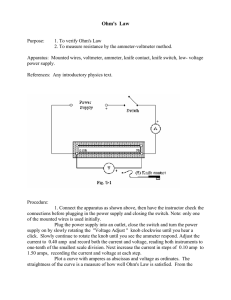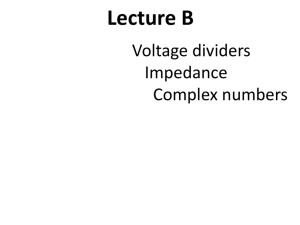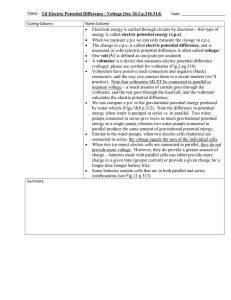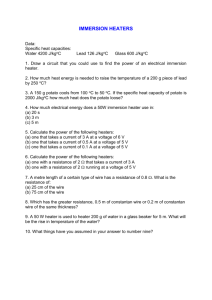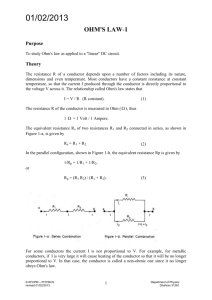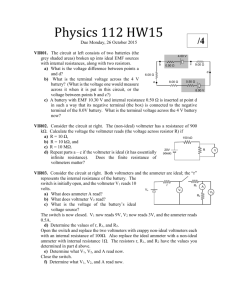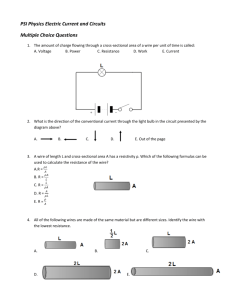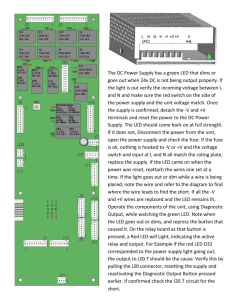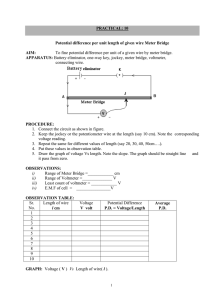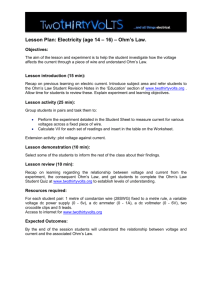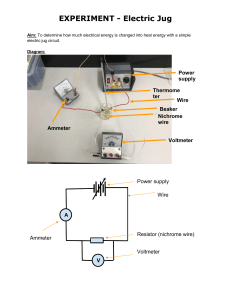Ohm`s law - schoolphysics
advertisement
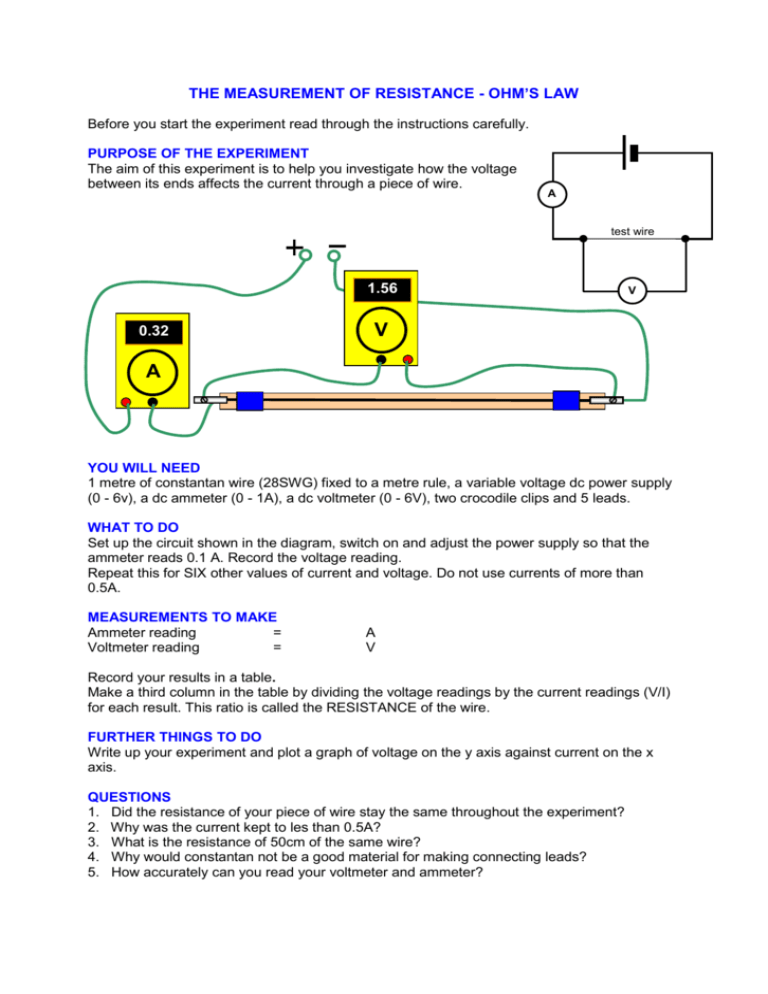
THE MEASUREMENT OF RESISTANCE - OHM’S LAW Before you start the experiment read through the instructions carefully. PURPOSE OF THE EXPERIMENT The aim of this experiment is to help you investigate how the voltage between its ends affects the current through a piece of wire. A test wire 1.56 0.32 V V A YOU WILL NEED 1 metre of constantan wire (28SWG) fixed to a metre rule, a variable voltage dc power supply (0 - 6v), a dc ammeter (0 - 1A), a dc voltmeter (0 - 6V), two crocodile clips and 5 leads. WHAT TO DO Set up the circuit shown in the diagram, switch on and adjust the power supply so that the ammeter reads 0.1 A. Record the voltage reading. Repeat this for SIX other values of current and voltage. Do not use currents of more than 0.5A. MEASUREMENTS TO MAKE Ammeter reading = Voltmeter reading = A V Record your results in a table. Make a third column in the table by dividing the voltage readings by the current readings (V/I) for each result. This ratio is called the RESISTANCE of the wire. FURTHER THINGS TO DO Write up your experiment and plot a graph of voltage on the y axis against current on the x axis. QUESTIONS 1. Did the resistance of your piece of wire stay the same throughout the experiment? 2. Why was the current kept to les than 0.5A? 3. What is the resistance of 50cm of the same wire? 4. Why would constantan not be a good material for making connecting leads? 5. How accurately can you read your voltmeter and ammeter?

